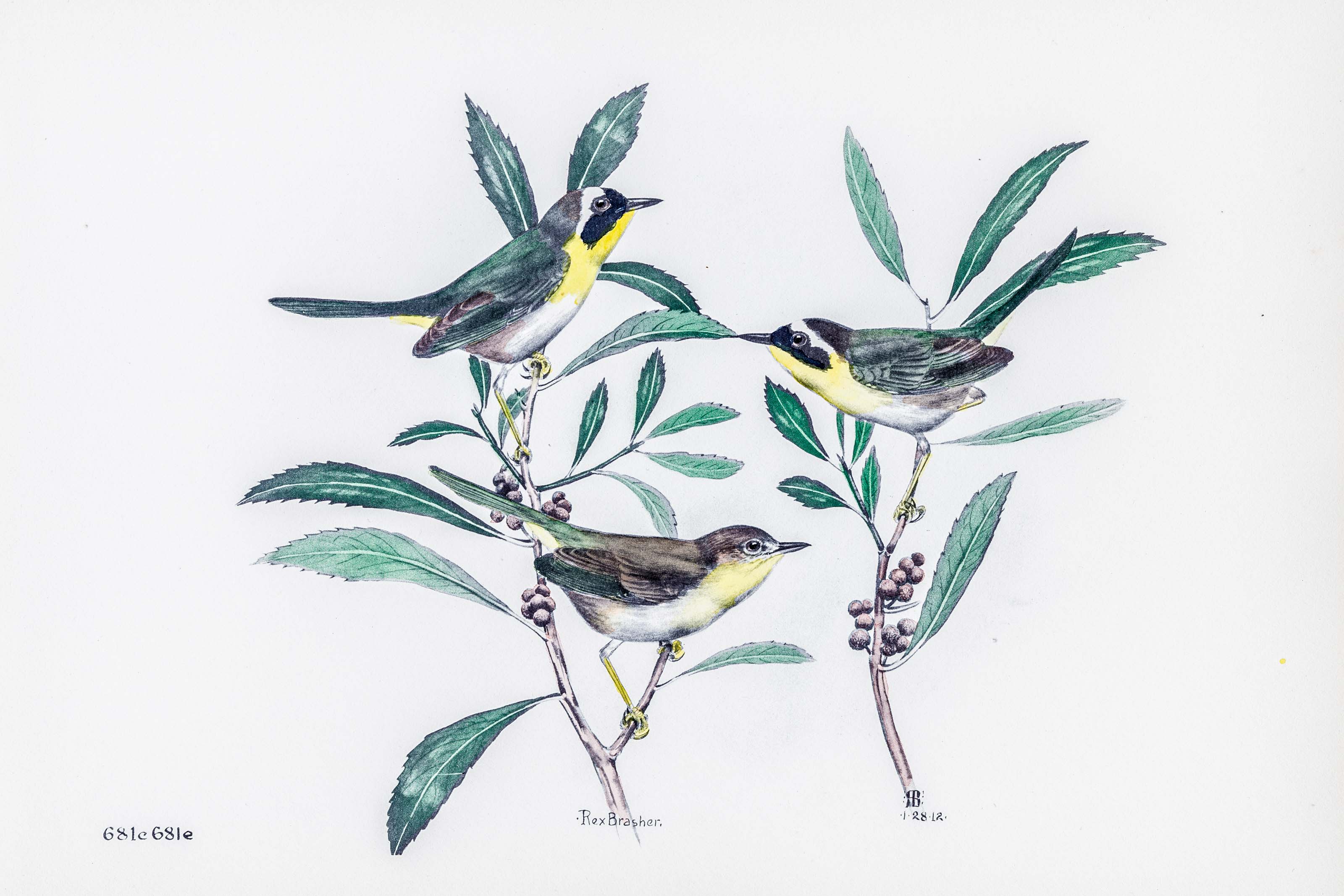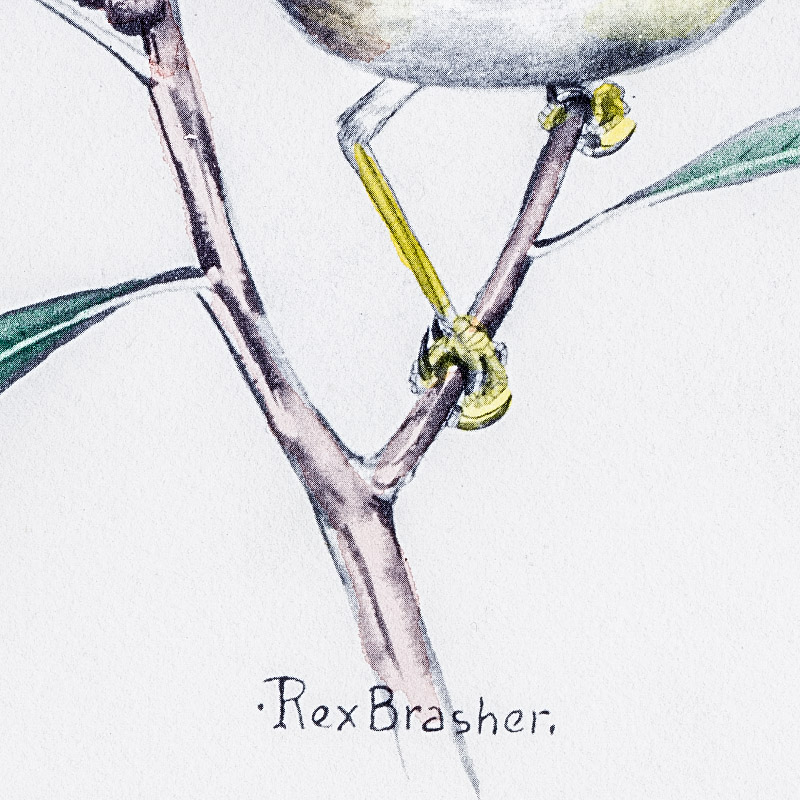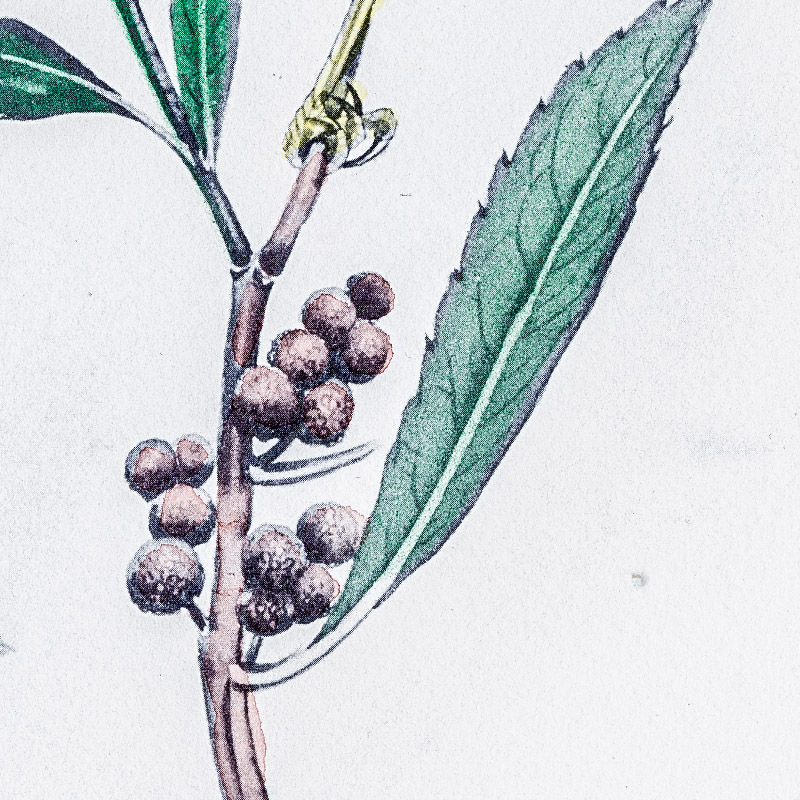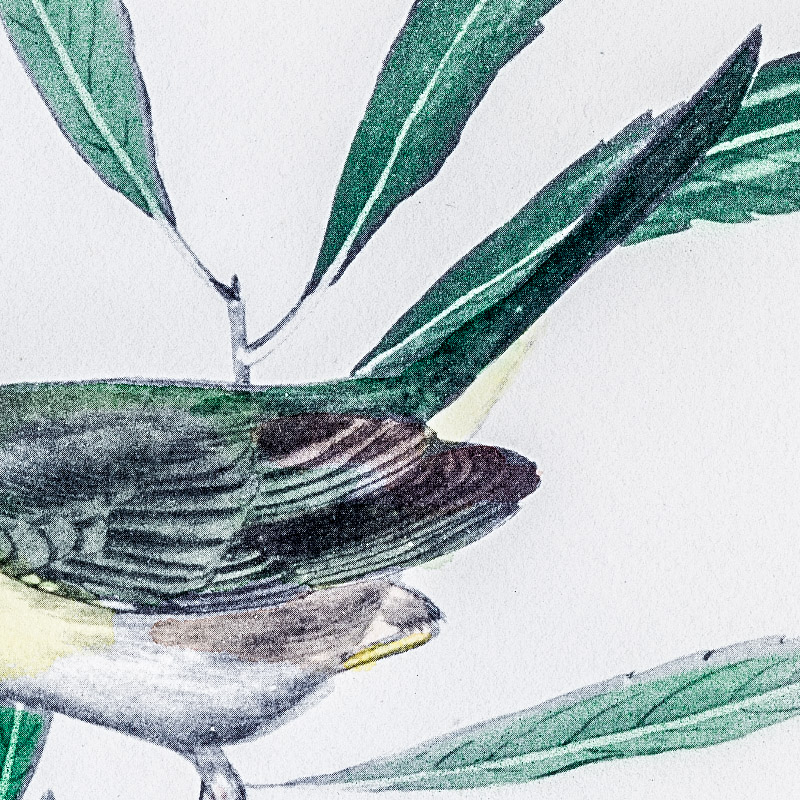






1912
1930
11
681c-681e
A team of dedicated board members, volunteers, and student interns has published every page in Volume 9. This volume includes 360 images of paintings and lyrical descriptions of birds, now available online for everyone to enjoy anywhere in the world. This is a monumental task. Each volume requires approximately 400 hours to photograph, edit, transcribe, catalog, and publish online. We need your support to complete this work.
If you're tech-savvy, have a good eye, are meticulous with details, and love structured data, please consider volunteering by emailing us at hello@rexbrasher.org.
We encourage all bird lovers and supporters to consider a monetary donation to support our mission to make Rex's work available for everyone. You can provide a one-time or recurring donation online.
Pacific coast from southern British Columbia to southern California.
About Lake Merced it is evenly distributed and is resident the year around, although much less in evidence during the winter months. In the short dark days of December a walk about the dreary swampland of the old rancho will often disclose the small olivedrab figure of sinuosa flitting out of sight far in advance of your approach, while the wind bears down to you its solitary chack of protest and suspicion. At this season these birds are more often heard than seen. They apparently forsake in greater part the boggy meadows where they dwelt in Summer and keep to the seclusion of the high tules standing in deep water; but with the gradual approach of Spring their incursions into the shorter grasses and out among the willows become more and more frequent, until by early February the yellow breasts and masked faces of a solitary pair may be met with like the outposts of an army, high up among the lupine bushes on the dry hillsides. The greater number, however, are content to remain close down beside the lakes in the old willowy haunts of the previous year. At this period I have once or twice heard them utter a short grating k-r-r-r-r-r in addition to their familiar chack of distrust.
It is usually not until some warm, sunny morning in late February that the clear ringing wreech-ity, wreech-ity, wreech-ity, wreech-ity, of the male is heard. This song varies considerably with the season and individual, those in early Spring often sounding sadly out of tune, and some are even rendered in a condensed form of two syllables; but the power of it rises rapidly as the year advances until by the end of March its nuptial gladness pours forth in full-throated volume. Sometimes as evening approaches, one of the little black-faced birds will leap into the air with fluttering wings and expanded tail and as it slowly tumbles down into the grass again, will execute an exquisite series of melodious runs and trills not unlike the vocal accomplishments of the Chat.
There has occurred of recent years a serious factor which may possibly, if long continued, result in permanent changes in the nest-building of these birds. It has become a custom of the Italian truck gardeners who cultivate the upper hills of Merced to make frequent excursions down to the lakes to cut the tough wire grass in which sinuosa nests, in order to use it for binding vegetables, thus economizing in cord. For this purpose the grass is collected in enormous quantities, great swathes being opened through the thickest growths and in other places entire meadows being utterly denuded. As this destruction takes place during the time when eggs and young are in the nests, it is reasonable to conclude that numbers of these are annually destroyed. As a result of this persecution the Yellowthroats are nesting less abundantly in grassy flats and adapting themselves more to life in inaccessible tules of the open lake, or else building their homes higher up toward the banks amid thickets of blackberry and willow. Certainly the number of sets found in these localities is far greater now than in former years, and in time such safety zones may be used exclusively. —Schussler.
Fresh water marshes of San Francisco Bay.
Breeding of above subspecies similar to Maryland Yellowthroat.
A tree up to 40 feet high, reduced to a shrub in southern part of its range, distributed on sand dunes and coast hillsides from Puget Sound to Santa Monica, California.